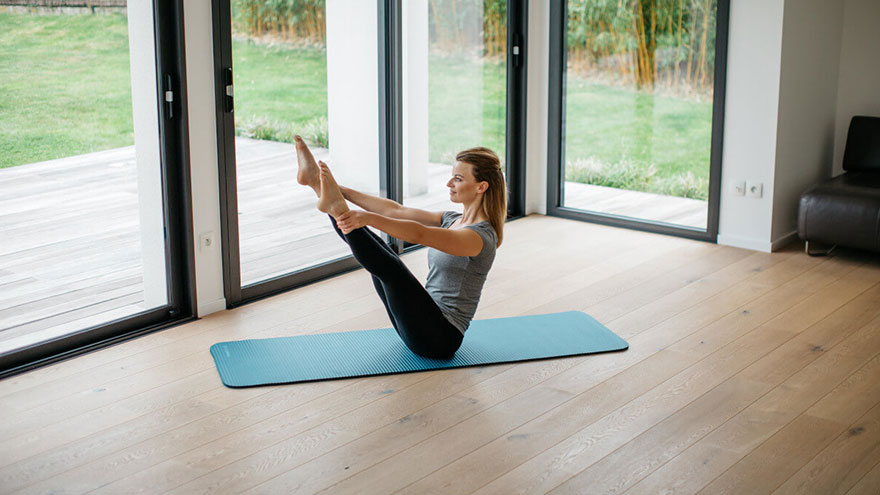What Does Pilates Involve the Use of?
The Pilates method of total-body conditioning consists of an extensive series of exercises, which use body weight, resistance bands, small props and specially designed pieces of equipment. Although many of the most basic Pilates exercises isolate specific muscle groups, as you gain strength, mobility, balance and coordination, the advanced exercises target multiple muscle groups simultaneously.

Targeted Breathing Methods
The words powerhouse and core muscles often share the same sentence with Pilates exercises, but it’s the coordinated breathing patterns that promote maximum engagement of these muscles. Your transverse abdominis muscle claims center stage in the Pilates method breathing technique. During exhalation, this deep core muscle presses against your diaphragm to expel the air. This action results in a much deeper contraction than what you would get if you simply pulled your belly in. During the more strenuous upper-body exercises, usually performed on the apparatus, the Pilates breathing method prevents the raising of blood pressure often associated with holding the breath during weight lifting.
Total Abdominal Muscle Engagement
“All of them” is the correct answer to the question, “which Pilates exercises work your abs.” Although certain supine Pilates exercises specifically target your rectus abdominis and obliques through spinal flexion and rotation, your abdominal muscles remain active throughout the entire session. Joseph Pilates was way ahead of his time in his belief that the powerhouse, or deeper core and external abdominal muscles, provide power and stability for every movement. During a spinal flexion exercise such as the roll-up — a variation on the full situp — your rectus abdominis, the larger, superficial abdominal muscle, performs most of the action. In plank variations such as the leg-pull, your deeper core muscles stabilize your spine.
Foot and Ankle Movements
When Joseph Pilates arrived in the United States during the 1920s, his reputation as a dancer’s fitness guru had already preceded him. Back in Germany, the land of his birth, the Pilates method had gained the respect of dance industry giants such as Rudolf Laban and Hanya Holm. When he built his New York City studio, the dancers came in droves. Foot and ankle injuries were common among dancers, and equipment such as the reformer and chair provided a variety of standing and supine lower-leg exercises. While less prevalent in the mat series, foot and ankle exercises are essential to apparatus workouts.
Leg and Glute Activity
The iconic Pilates side-lying leg series offers an intense inner-thigh, outer-thigh and glute workout. In most of the exercises, the top leg targets the outer thigh, along with the hip rotator called the gluteus medius. The bottom leg works the inner thighs. Some instructors combine this series with side planks, which also engage your obliques. The Pilates apparatus facilitates additional weight-bearing exercises from a standing position. These compound movements work your quads, hamstrings and glutes simultaneously, while your inner and outer thighs contract isometrically — without movement — to stabilize your knees. If your Pilates instructor notices inner-thigh laziness, she might have you squeeze the fitness circle, a flexible metal device that enhances inner-thigh isometric strength.
You Might Also Like :: Stair Climber vs. Jump Rope

